Diospyros virginiana
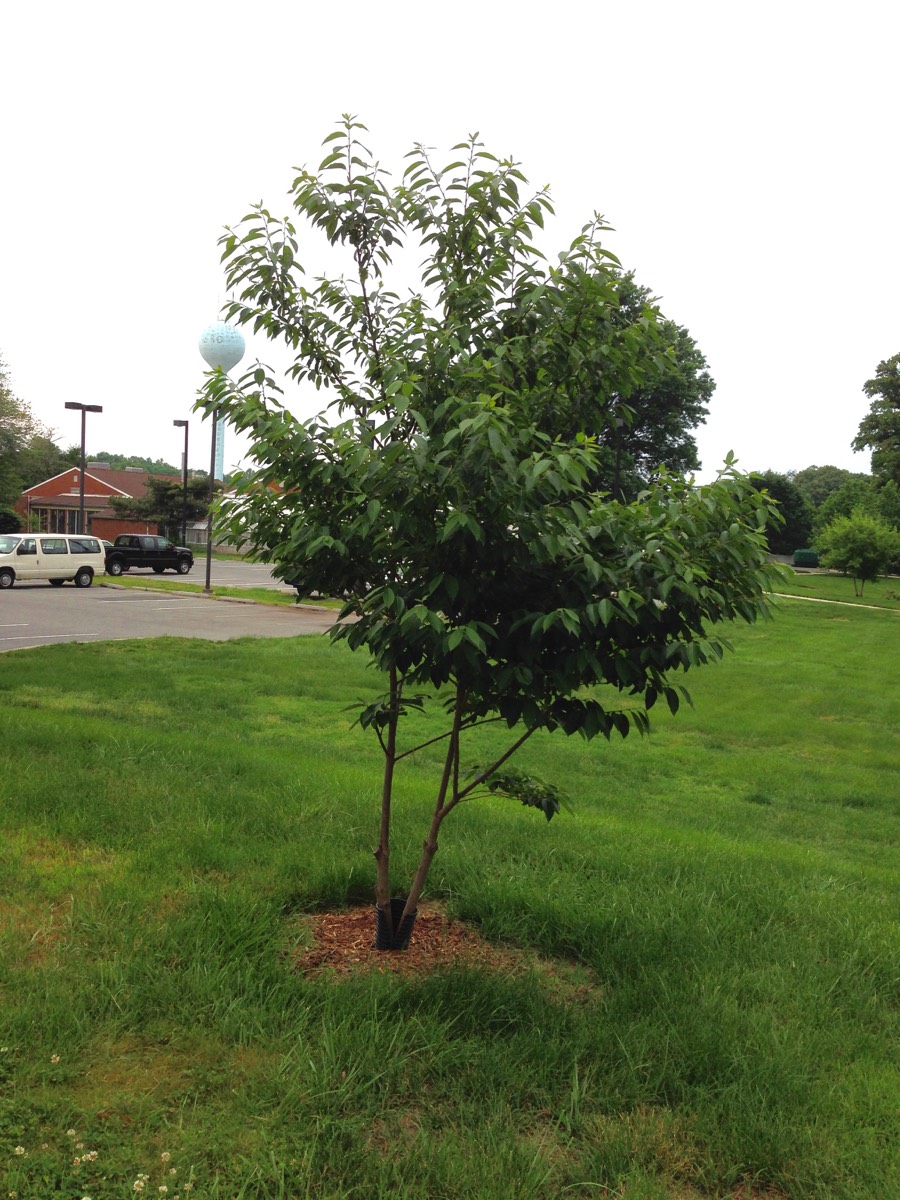
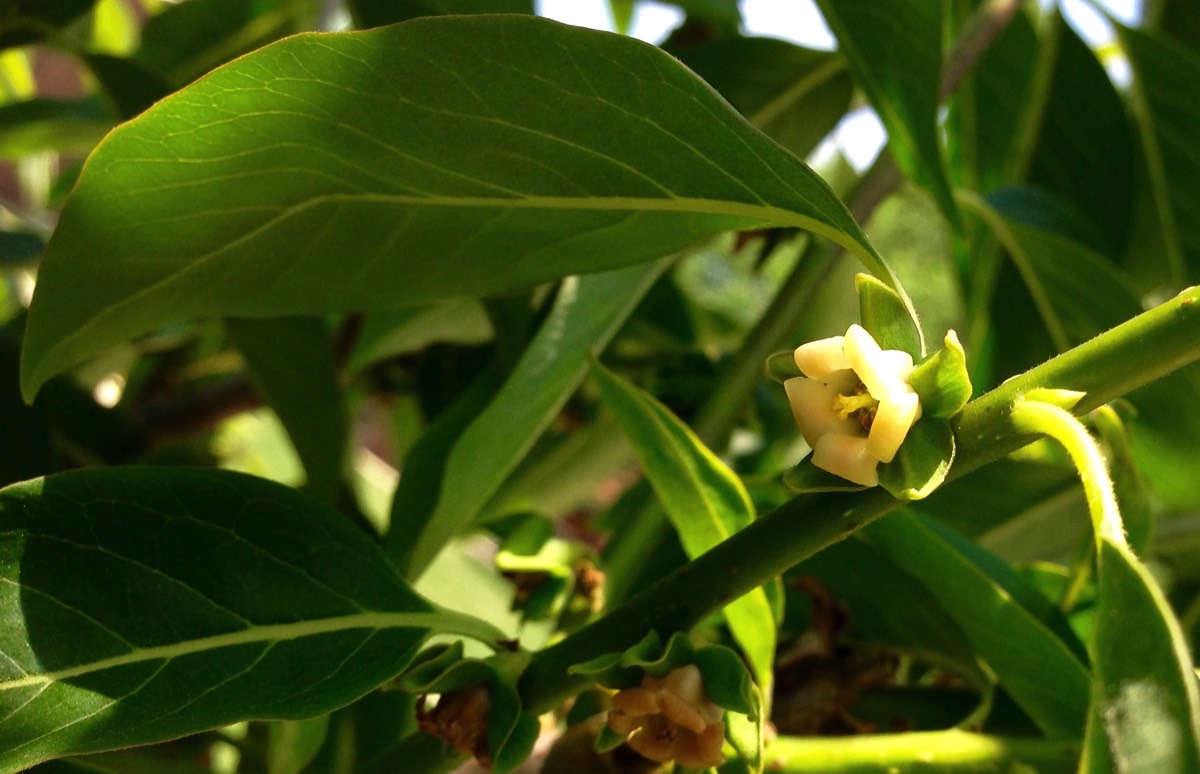
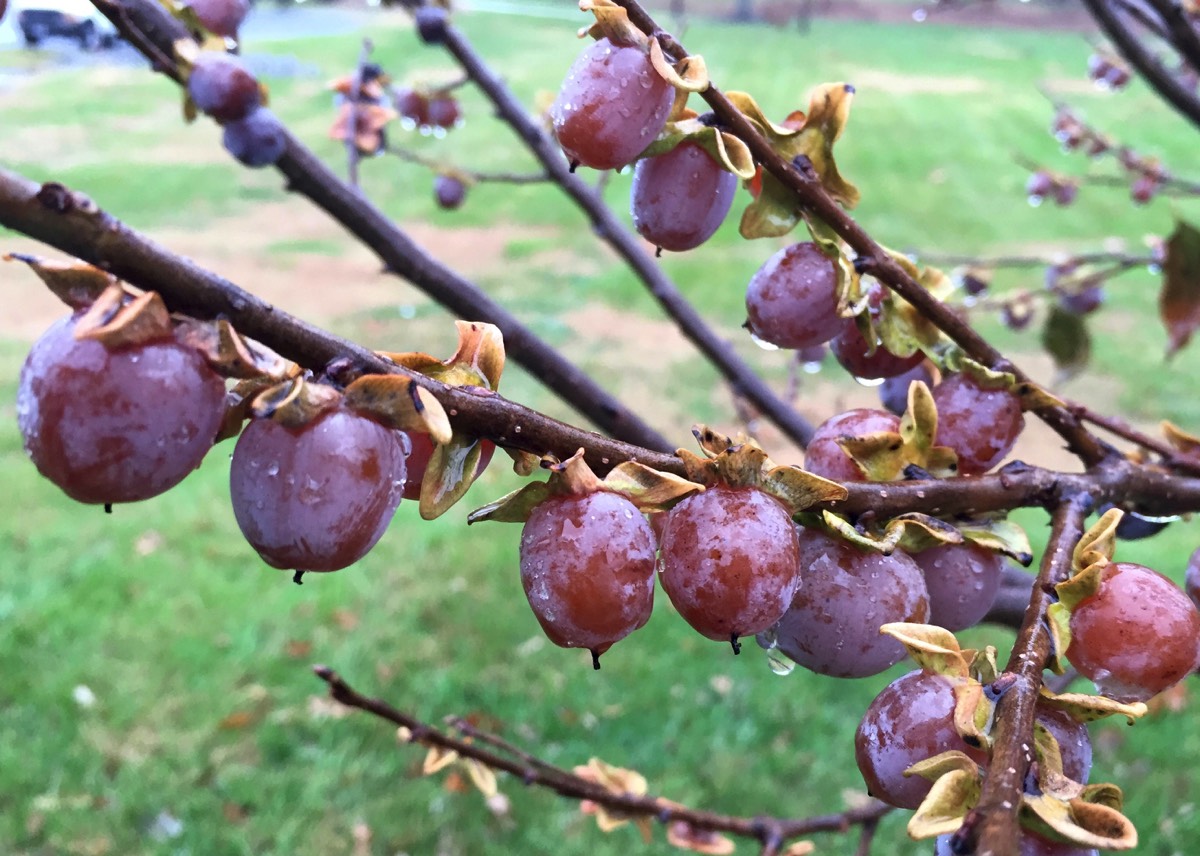
Diospyros virginiana
PERSIMMON
Ebenaceae
S.E. North America
Location: map coordinates K-11 (west of Conwell Hall). (This tree not yet marked with a yellow dot on interactive map)
N 39°11'13'' W 75°32'45''
Planting history: planted 5/6/10. Source: Willey Farms, DE. (Dr. S. Yost, USDA NIFA Capacity Building Grant funds).
Description:
Native species, State Rank S5 (very common in Delaware)
PERSIMMON
Ebenaceae
S.E. North America
Location: map coordinates K-11 (west of Conwell Hall). (This tree not yet marked with a yellow dot on interactive map)
N 39°11'13'' W 75°32'45''
Planting history: planted 5/6/10. Source: Willey Farms, DE. (Dr. S. Yost, USDA NIFA Capacity Building Grant funds).
Description:
- deciduous tree
- etymology: Diospyros from Greek dios = divine, and pyros = wheat (referring to the edible fruit); virginiana = of Virginia
- also called American persimmon, common persimmon
- leaf simple, alternate, 3”-6” long
- trees usually dioecious (separate male and female trees), but sometimes both male and female flowers on same tree. Flowers yellowish-green, 0.4” wide
- fruits round, yellowish-brown, usually 0.8-1.5” diameter; soft and sweet when ripe. If not fully ripe, notably astringent (causes mouth to pucker); said to be less astringent after a frost, but this is probably more a matter of timing and ripeness. It’s best to avoid eating large quantities of persimmon skins, which has been linked to formation of hard masses (diospyrobezoars) in the digestive tract. A valuable food for wildlife, including birds and raccoons
- bark distinctive; dark, thick and broken into small square blocks
- wood hard, strong and heavy, but inferior for lumber; in the Ebony family
- prefers full sun
- mostly a southern tree; natural range north to southern Connecticut
Native species, State Rank S5 (very common in Delaware)
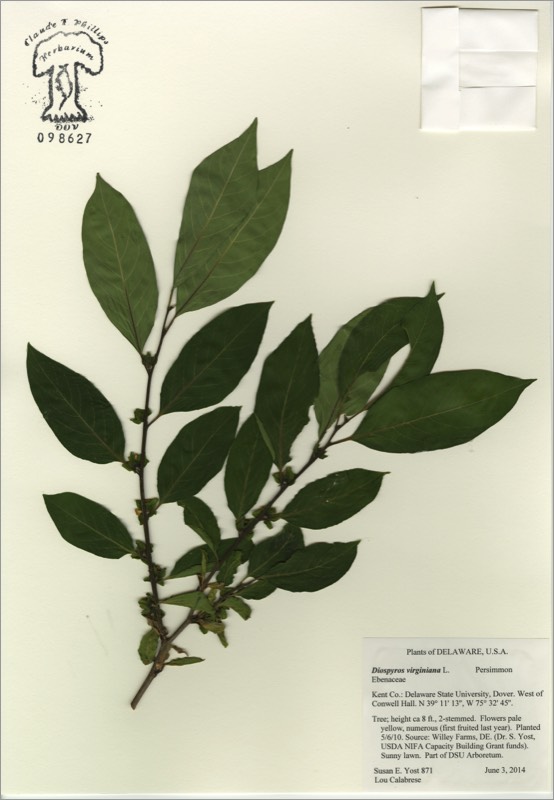
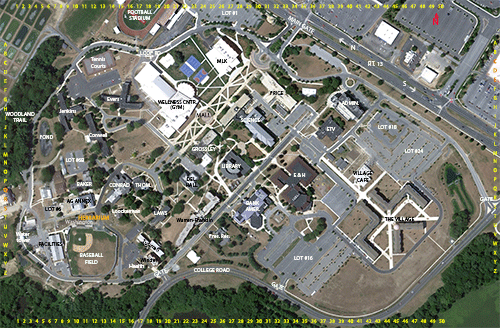
HIT REFRESH TO START LOCATION GRAPHIC